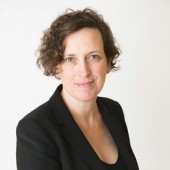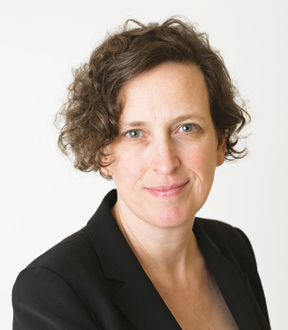Up for the Count? | Editorial
The 2020 Census is upon us, with preparation already underway to count how many people live in the United States, and where. Our public libraries—connected to their communities and relatively ubiquitous—can and will be critical partners in getting this important work done well, and fairly.
U.S. libraries are critical to the 2020 Census
 The 2020 Census is upon us, with preparation already underway to count how many people live in the United States, and where. Our public libraries—connected to their communities and relatively ubiquitous—can and will be critical partners in getting this important work done well, and fairly.
The 2020 Census is upon us, with preparation already underway to count how many people live in the United States, and where. Our public libraries—connected to their communities and relatively ubiquitous—can and will be critical partners in getting this important work done well, and fairly.
This task was front and center at a convening last month held at the Queens Public Library. The event, expanding on the theme of Harnessing NYC’s Public Libraries To Support Immigrants, was made possible with the support of the Charles H. Revson Foundation. It brought together leaders from across the city working in government, community-based organizations, and libraries. Issues around creating access to the census and discussion of the importance of engaging new immigrants in the process anchored the discussion and added greater urgency. While New York–centric, the main takeaways are useful for anyone thinking about the census.
Each time it happens, the census brings the challenge of how to ensure everyone gets counted. With this round, piloting a digital-first process, the impact of barriers to access intensifies. Institutions like libraries are already key to distributing information about an initiative such as the census. But the digital format, and the public library’s concomitant role in providing access, will herald a massive ask of our committed but already stretched institutions. Active planning and partnership to improve the process will provide a unique opportunity.
Getting a good count counts. Bitta Mostofi, commissioner of the New York City Mayor’s Office of Immigrant Affairs, put it bluntly. “What does the census say? It says how much money flows into New York City,” she said. The same is true of every community. It also, she noted, determines a state’s representation in Congress. The National League of Cities reminds us that shaping representation is the actual “constitutional purpose for the decennial census,” with far-reaching consequences. It also helps tell our national story, without another such research opportunity for ten more years.
That story should be fully told—which requires us to ensure that marginalized and previously undercounted populations are included. This, as the panelists in Queens stressed, is especially hard when considering new immigrants—who may have good reason to fear interaction with government agencies, do not understand the goals of the census and its privacy protections, or do not even know about it. There is, noted moderator Eli Dvorkin, editorial and policy coordinator for the Center for an Urban Future, “potential for vast undercounting of our neighbors.”
Even before the possibility of including a citizenship question, the current political atmosphere makes engagement harder, noted Mayra Aldas-Deckert, director of community engagement at the NY Immigration Coalition. [On June 27, the court issued a 5-4 ruling blocking the Commerce Department from adding the question. Executive Branch officials must now provide justification, which may delay the decision long enough to miss the deadline for the question to be included on the census questionnaire.] With the threat of ICE (U.S. Immigration and Customs Enforcement) at the door very tangible for many, it will be a big problem to encourage them to even open the door when census counters arrive. Libraries will serve as places for such community members to fill out the form, she said, and as trusted partners in helping educate the community “that it will be okay” to participate in the census. The work ahead, Mostofi argued, “is to encourage people to self-respond before someone gets to the door.”
The ideas flew when it came to how libraries can participate, while acknowledging that resources are thin and any ambitious push would need financial support. Suggestions ranged from libraries as hubs for raising awareness about the census process and providing access to the digital form on-site and via outreach vehicles such as tech mobiles, to leveraging volunteers to help deploy tech outreach. Mostofi noted that there are also census jobs now open, and libraries can help connect people to those. Eva Raison, director of outreach services at Brooklyn Public Library, aptly pointed out that libraries can also be conveners of the people and organizations involved.
With a challenge this big, partnership will be required to ensure inclusion, but the payoff will be worth every effort.


RELATED
ALREADY A SUBSCRIBER? LOG IN
We are currently offering this content for free. Sign up now to activate your personal profile, where you can save articles for future viewing









Add Comment :-
Comment Policy:
Comment should not be empty !!!